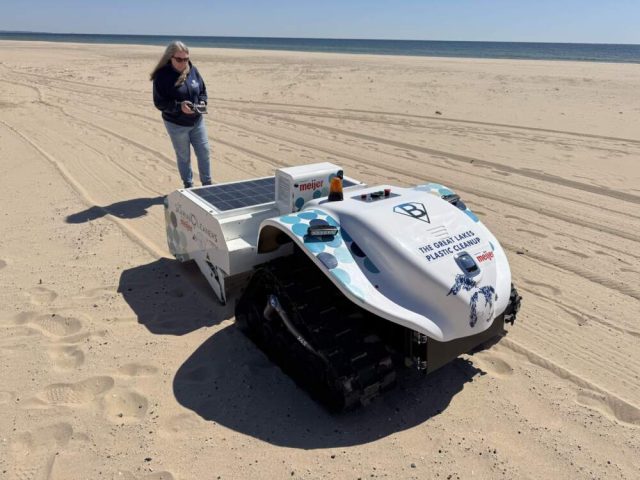BeBot the Beach Cleaning Robot Tackles Plastic Pollution

Plastic pollution in the Great Lakes is a growing environmental and public health concern, with most shoreline litter made up of plastic. While volunteers play a major role in cleaning up the beaches, technology is stepping in to help—most notably with a small beach-cleaning robot called the BeBot.
At Pere Marquette Park in Muskegon, researcher Jamie Cross from Grand Valley State University operates the BeBot, a battery-powered robot that sifts several inches into the sand to collect tiny plastic pieces and debris. The BeBot is particularly effective at picking up the small plastic fragments that human volunteers often miss. These small particles, once broken down into microplastics, pose serious risks as they enter the food chain and even the human body.
Beyond cleanup, the BeBot also serves as a powerful educational tool. Its unusual, dune buggy-like appearance draws attention from beachgoers, sparking conversations about plastic pollution. Annalise Steketee, sustainability manager at Meijer—the company that funded this and other BeBots in the region—emphasizes that its primary role is to raise awareness rather than act as a sole solution to the plastic problem.
Although researchers like Sherri Mason stress that cleanup alone can’t fix plastic pollution and that reducing plastic use is critical, tools like the BeBot play an important role in both removing harmful debris and engaging the public. While it hasn’t turned up any diamond rings yet, the BeBot is helping communities better understand and confront the impact of plastic pollution on the Great Lakes.
Read the full story on WBUR.
Photo Credit: Chris Bentley, Here & Now
